Do-not-reply Emails: Best Practices and 10 Examples you Can Learn From
Do-not-reply emails can come in the way of effectively communicating with your subscribers. This article will give you insight into alternatives you can adopt to improve communication with customers.

No one enjoys one-way communication, especially a customer that has a number of concerns that need to be addressed. When you use do-not-reply emails to send messages to your audience, you’re basically telling your customers that you don’t want to hear from them. While most businesses use a do-not-reply email to avoid getting their inboxes filled up, it could hinder email marketing efforts.
In this article, you’re going to see why using do-not-reply emails can be bad for your marketing campaigns. You’ll also learn the best practices to adopt to improve communication with customers.
Ready?
Let’s dive in!
Table of contents
- What is a do-not-reply email?
- Why using a do-not-reply email is a bad idea for you marketing strategy
- Do-not-reply best email practices
- Wrapping up
What is a Do-not-Reply Email?
You’ve probably come across do-not-reply emails in your inbox. It is usually in the format “[email protected]”. This type of email is sent by companies when communicating email marketing messages such as transactional emails. If a subscriber tries to reply to a do-not-reply email, they usually get no response or even a delivery failure notification.
Most companies aren’t aware of the opportunities they miss when they send their emails using a do-not-reply email address. In the next section, we’re going to find out why using a do-not-reply email isn’t a good idea for your email marketing strategy.
Why Using a Do-not-reply Email is a Bad Idea for you Marketing Strategy
How would you feel when you don’t receive a response to your message? Using a do-not-reply email can affect your relationship with subscribers and hurt your email marketing efforts.
Here are some reasons why do-not-reply emails can cause more harm than good.
1. It prevents a two-way communication
Communication is more effective when the two parties give necessary feedback to facilitate a proper dialogue. If you don’t allow your readers to reply your emails, you miss out on the opportunity to gain valuable feedback. The last thing you want is for your subscriber to feel out of touch with your brand.
2. Customers could end up frustrated
There's nothing more annoying than waiting for a response that never shows. While your purpose for sending do-not-reply emails may be for marketing purposes. You also need to examine things from your customers’ perspective.
Most times, when customers respond to a do-not-reply email address, they don’t check the email address. If they get a delivery failure notification, they could easily be frustrated. At this point, they won’t really know the reason why their response can’t get through.
They may begin to think that you don’t value them and perceive your brand as uncaring. This kind of impression can damage your brand reputation if something is not done.
3. A do-not-reply email can harm your delivery rates
Most email clients such as Gmail, Outlook use filters to prevent spam messages from flooding their users’ inboxes. Not only that, even your subscribers are most likely to mark your email as spam themselves. For instance, if a subscriber responds to your email and gets a delivery error message, they’ll get the impression that your email was spam.
In this case, they’ll mark your email as spam, and your subsequent emails won't get to them. Your sender’s reputation would be affected negatively. Even more, your emails would have poor delivery rates.
4. Non-compliancy
While no-reply emails can be a total deal breaker, there are also GDPR and CAN-SPAM laws. These laws enable customers to request information about the data collected from them. Do-not-reply emails don’t give customers the opportunity to ask how you’re using their data, which would make your emails non-compliant. Not complying to GDPR standards could result in fines.
5. You could miss out on valuable information
There are a lot of reasons why subscribers would want to reply to your emails. It could be that they are having trouble using your product or completing a transaction on your website. When you use do-not-reply emails, you miss out on obtaining valuable information that will improve your communication with customers.
When people subscribe to your email list, they expect to receive answers to their questions, failure to do this for your customers could lead to low conversion rates.
Best Practices For do-not-reply Emails
You don’t have to settle for do-not-reply emails, there are other ways you can effectively send marketing emails without sacrificing communication with your subscribers. Here are 8 best practices and examples you can learn from.
1. Use a real email address
Rather than using do-not-reply emails, opt for a real email address. A customer will be more receptive to your emails when you use an address that looks more friendlier in their inboxes. However, you need to choose an alias that stands out and will prevent marketing responses from mixing up with support replies. Here are some examples you can use as an email alias:
M&S shows a great example of using a real email address. The thought of having to deal with an influx of customer replies may be overwhelming but there are ways you can manage this issue. For example, you can use filters to manage customer replies.
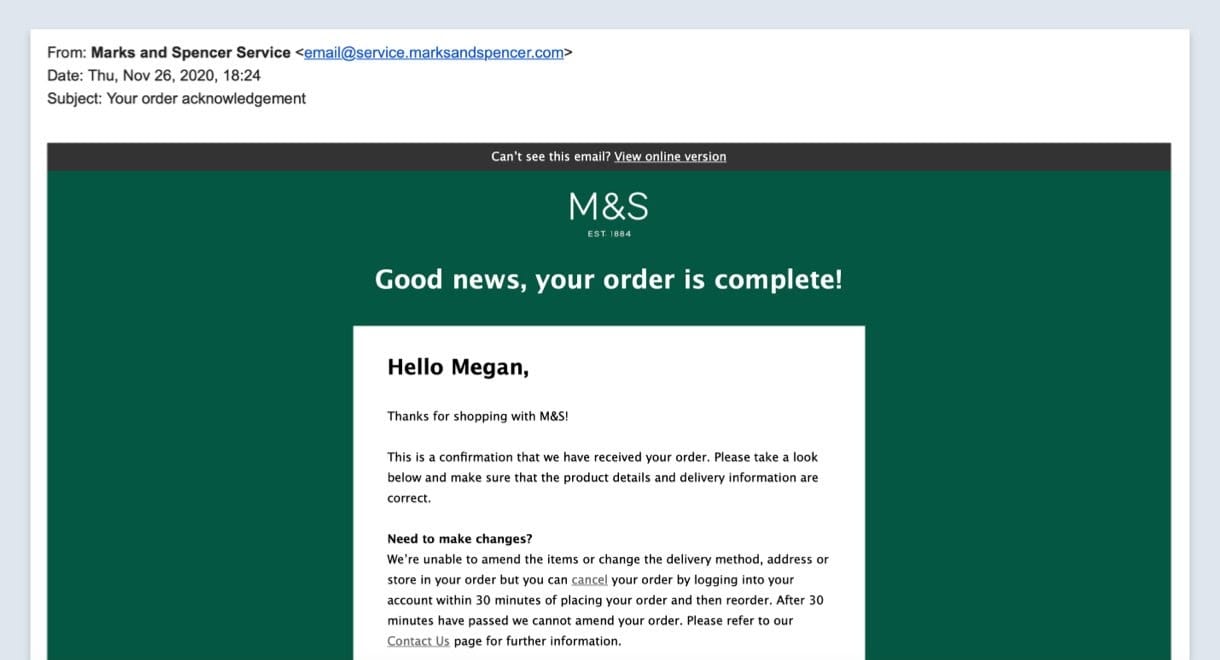
2. Use filters to manage replies
Sometimes, manual work isn't going to cut it. Your subscribers' responses may end up exceeding what your current manpower can handle. This is where you'll need to use tools to manage and reply to emails. Built-in tools in email service providers can allow you to create commands with filters to transfer emails to a particular folder. If you’re using Gmail, you can use the down arrow in your search bar to use filters.

3. Use customer responses to create content
Your customer feedback is a valuable asset to your email marketing efforts. As soon as you start getting feedback from subscribers, you will notice that your customers may have questions regarding your information. This means that you can address their concerns and questions by creating a resource page including links in your emails. In this email, Asana shows a great example of including resources in its email.

4. Interact with customers to improve communication
You won't really make a good impression if you don't respond to your customers' requests. Ensure that you reply to every customer feedback or queries. Have your team members keep track of your email aliases.
When you listen to your customers, you’ll get a better understanding of your challenges and needs, this will help you to improve your customer journey. You can also include your business line in case a customer may want to speak with a customer support agent. Like this example from Warby parker.
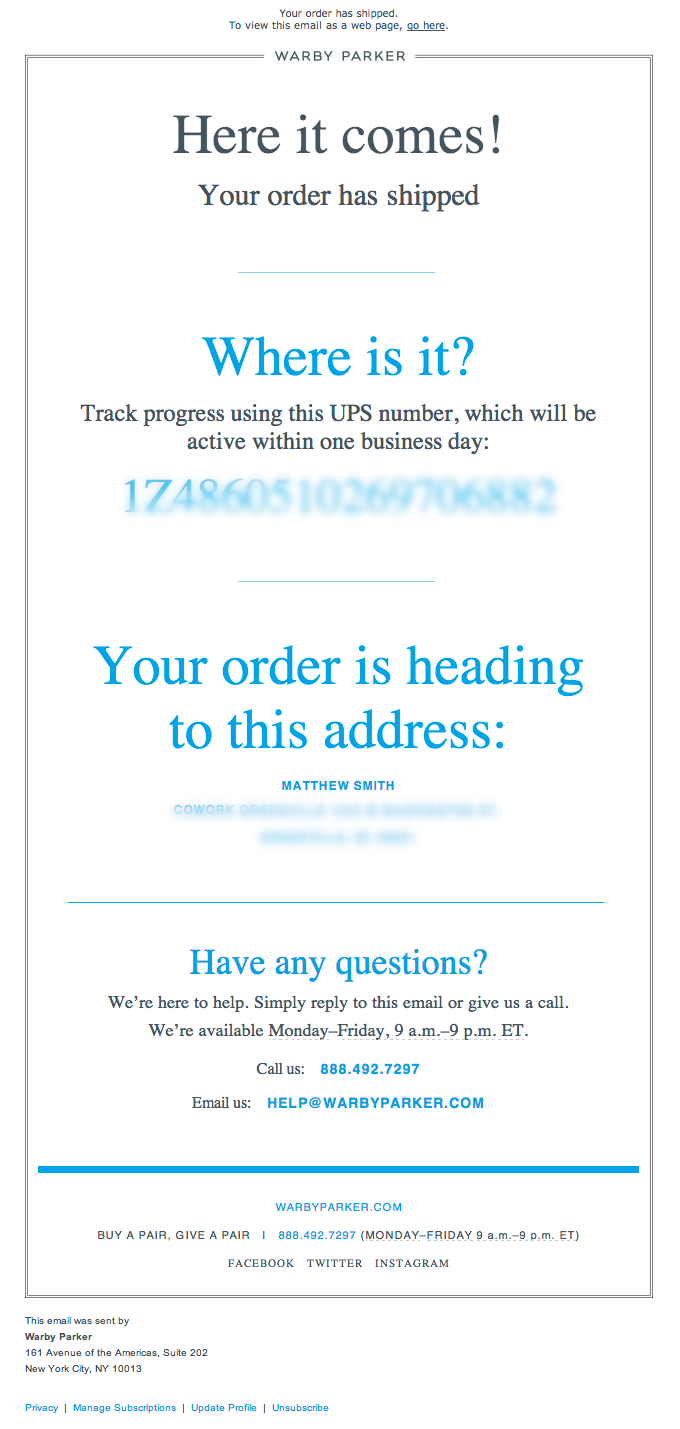
5. Clearly state additional email aliases customers can use to leave responses
You can set up a different email alias for customers to direct their replies. This is applicable in situations where customer replies are meant to be sent to specific team members for monitoring. For example, this Gumroad email clearly stated two different email aliases customers can send replies to.
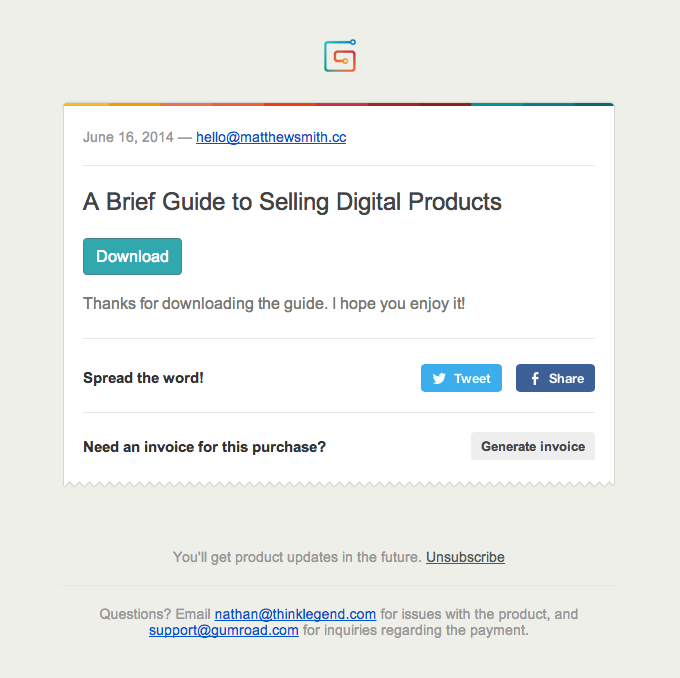
6. Include resources to improve customer experience
One way you can reduce the influx of email messages is to provide helpful resources that answer customers' most pressing questions. For example, you can include an FAQ page at the end of your emails or include a link to your help page. Remember to include links in your FAQ page that will provide additional information to customers and help improve their experience. This example for Airbnb is a great example of providing content around most often asked questions.

7. Encourage conversation with your audience
It's a good practice to encourage customers to drop a message even though they don’t have any questions at the moment. Simply asking for a “hello” or feedback regarding their experience with your product or service can go a long way in improving how you communicate with your audience. Plus, they would appreciate your interest in their feedback. Grilli type shows a good example of encouraging customer feedback.
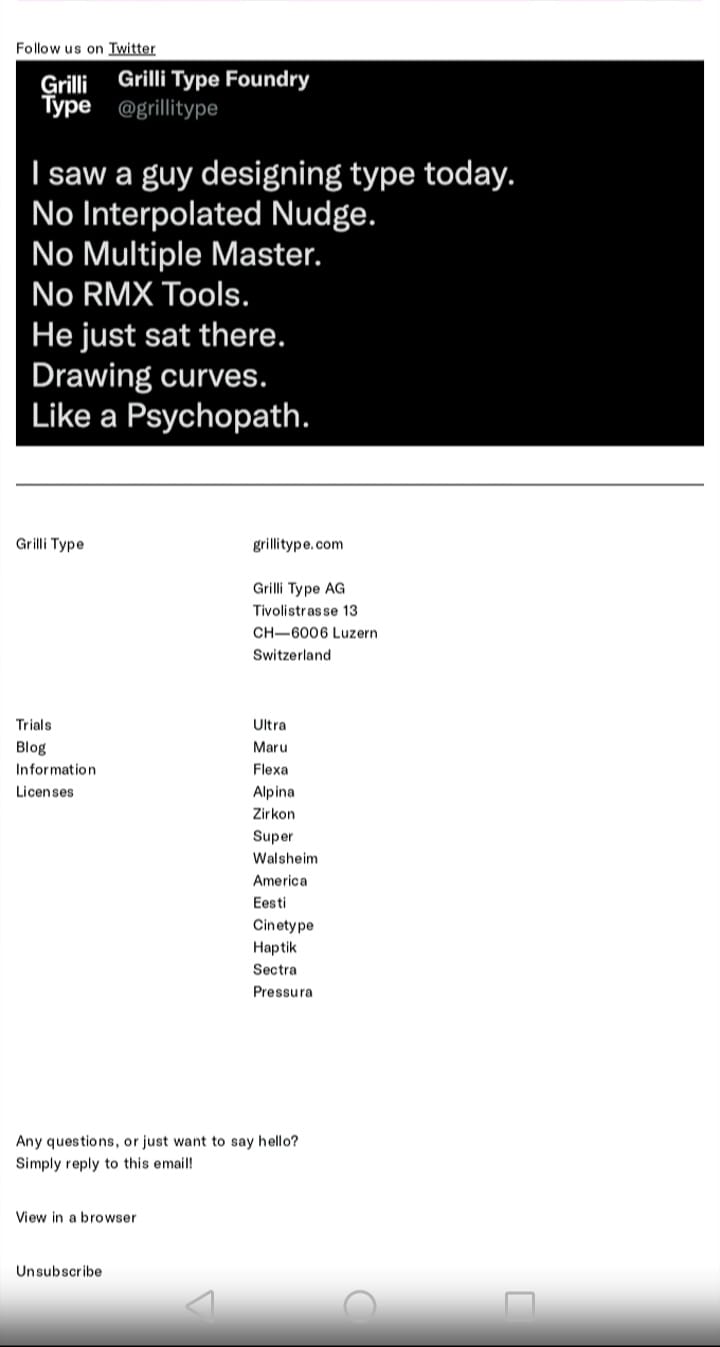
8. Set an autoresponder
An autoresponder can be helpful when communicating with customers. When a customer sends a response to you, an autoresponder can send an auto reply for you. They will inform your customers that you received their emails and will respond to them as soon as you can.
You can also include additional information such as customer support email address in case a customer may need to send an urgent message. For example, Great western railway set up an autoresponder to inform customers that they have received their email and will respond as soon as possible.
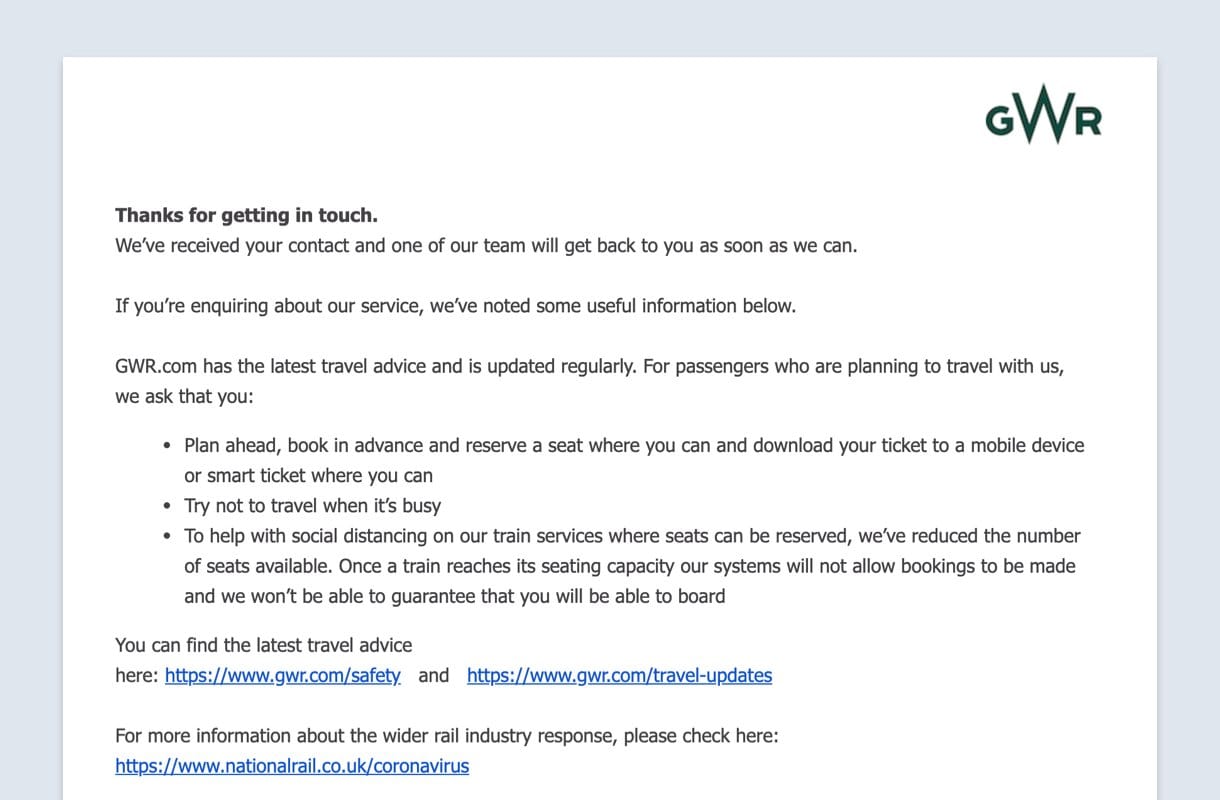
Wrapping up
Using a do-not-reply email can cause problems for your email marketing efforts. It can negatively impact how you communicate with customers, reducing the effectiveness of your email marketing campaigns. Customers don’t want to interact with businesses that don’t listen so why risk using an email address that customers won’t appreciate?
That's why you need to use an email address that customers can reply to. You also need to set a process to manage customer replies, this will help you to uncover more content opportunities.